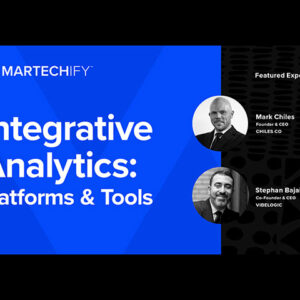Top 5 Data Integration Challenges and Ways to Overcome Them
The article “Top 5 Data Integration Challenges and Ways to Overcome Them” from castordoc.com provides an insightful exploration of the complexities and solutions surrounding data integration in today’s data-driven business landscape.
The article starts by highlighting the sheer volume of data generated daily, emphasizing the need for robust strategies to transform this abundance of data into actionable insights. It underscores the pivotal role of data integration in this process, as it enables organizations to streamline disparate data streams into a unified, analyzable, and accessible asset.
One of the standout features of the article is its breakdown of the ETL (Extract, Transform, Load) process, which is fundamental to data integration. By explaining each step—data extraction from heterogeneous sources, data transformation for accuracy and suitability, and data loading into a centralized repository—the article provides a clear understanding of the data integration workflow.
The article then delves into the top 5 data integration challenges faced by organizations and offers practical solutions to overcome them:
- Lack of strategic planning: The article emphasizes the importance of detailed strategic planning to align data integration objectives with business goals, identify required tools and technologies, set clear milestones, allocate budgets, and ensure ongoing alignment through regular reviews.
- Ever-growing data volume: As data volumes continue to increase, the article suggests breaking down integration tasks into smaller batches, refining workflows to prevent bottlenecks, and optimizing the data integration pipeline for efficient data processing.
- Diversity in data sources: With a diverse range of data sources, the article recommends choosing agile integration platforms with wide-ranging connectors and transformation features. It also advocates for establishing common data models and employing specialized tools for processing specific data types.
- Security risks: Addressing security concerns, the article emphasizes encryption, role-based access control, data masking, data retention policies, regular audits, and strict data governance as essential measures to mitigate risks throughout the data integration lifecycle.
- Hybrid cloud and on-premises environments: For organizations dealing with hybrid architectures, the article highlights the need for versatile data integration solutions that facilitate fluid data movement, consistent data management, security policies, and cost management strategies.
Moreover, the article provides a set of data integration best practices, including clear strategy and objectives, robust data governance, security and compliance measures, scalable integration tools, automation, real-time processing, and continuous optimization and review.
Overall, “Top 5 Data Integration Challenges and Ways to Overcome Them” is a comprehensive and valuable resource for data leaders and organizations looking to navigate the complexities of data integration effectively and maximize the value of their data assets.
Highlights:
- Clear explanation of the ETL process and data integration workflow
- Identification of top 5 data integration challenges and practical solutions
- In-depth coverage of data integration best practices for success
Sources
- Top 7 Data Integration Challenges and Solutions – DCKAP
- Ways to Overcome the Challenges of External Data Integration – Mandit Solutions
- Embracing the Power of External Data: Overcoming Challenges and… – BARC
- 3 Ways to Solve External Data Integration Challenges – Spiceworks
- 4 Common Data Integration Challenges – DATAVERSITY













